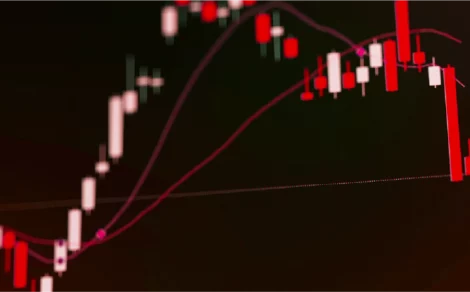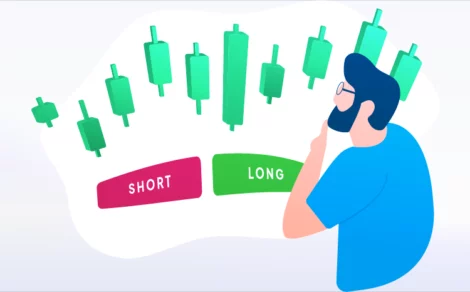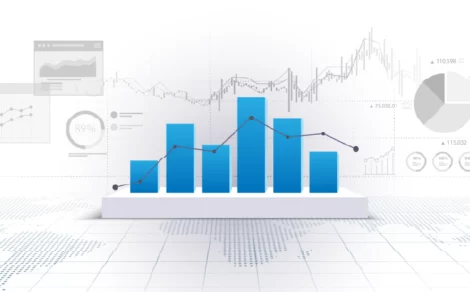When deciding between trading and investing, consider factors like: Financial goals Time availability Risk tolerance Capital resources Market knowledge Psychological temperament Each approach demands different commitments and suits different personalities and objectives.
Toruscope » Online Trading » Investing vs Trading: Which One Is Right for You?
When you enter the world of financial markets, you face an important decision: Should you become an investor or a trader? Both methods can help you gain wealth, but they are quite different in approach, time horizons, and the mindset you should have.
Knowing the difference between investing and trading can help you figure out which one is right for you based on your goals, risk threshold, and temperament. This guide examines the characteristics of both approaches to help you make a better decision.
What Is Stock Market Investing?
Stock market investing involves committing funds to assets with the expectation of generating profits over extended timelines. The emphasis is on slow and steady over fast profits by buying and selling regularly.
Here are the key aspects of this method:
- Investors typically purchase assets like stocks, bonds, or mutual funds and plan to hold them for extended periods to benefit from compounding returns.
- The investment strategy is primarily value-oriented. It utilises fundamental analysis, including examining company financial reports, management skills, competitive advantages, and price-to-earnings (P/E) ratios, to identify above-average value companies.
- Investing involves taking a more passive approach after initial research, allowing time and market growth to work in your favour rather than frequent monitoring and adjustments.
- This strategy typically requires less daily time commitment, making it suitable for those who cannot dedicate hours to monitor market conditions and price movements.
- Long-term investing generally incurs lower transaction costs and tax implications, since positions are maintained for extended periods rather than being frequently traded.
What Is Stock Market Trading?
Stock market trading represents a more active approach to the financial markets, where participants aim to capitalise on short-term price movements rather than long-term appreciation of assets.
Here are the key aspects of this method:
- Traders undertake regular buying and selling of securities, sometimes holding positions for mere minutes, hours, or days rather than months or years.
- Technical analysis has been key to trading success. This means studying patterns, price-volume indicators and market sentiment to forecast short-term price trends.
- This approach involves higher risks and presents potential for both substantial profits and losses. This makes strong risk management skills absolutely essential.
- Most traders employ specific strategies like day trading, swing trading, or position trading, each with different timeframes and approaches to market participation.
- Trading activities generally incur higher transaction costs due to frequent trades and may have less favourable tax treatment compared to long-term capital gains.
Understanding the Difference Between Trading and Investing
Here is a comparative analysis of stock market investing vs trading for your perusal:
| Distinction Area | Investing Approach | Trading Approach |
| Time Horizon | Long-term perspective spanning years to decades, focusing on fundamental growth and compound returns. | Short-term outlook ranging from minutes to weeks, capitalising on immediate market price movements. |
| Risk Profile | Moderate risk with a focus on wealth preservation alongside growth through diversification and patience. | Higher risk tolerance with exposure to greater volatility in pursuit of more frequent profit opportunities. |
| Capital Requirements | Can begin with smaller amounts, allowing time for capital to grow through compounding and regular additions. | Often requires larger initial capital to absorb transaction costs and withstand potential learning curve losses. |
| Knowledge and Skills | Understanding of business fundamentals, economic cycles, and basic financial statement analysis suffices. | Demands technical analysis proficiency, chart pattern recognition, and quick decision-making abilities under pressure. |
| Income Expectations | Focuses on gradual wealth accumulation through dividends and long-term appreciation rather than regular income. | Aims to generate more immediate, potentially regular income streams through frequent successful trades. |
| Psychological Temperament | Requires patience and emotional stability during market downturns without making impulsive decisions. | Demands discipline, stress tolerance, and the ability to make quick decisions without emotional interference. |
Which Strategy Suits Your Requirements?
Here are some key aspects you must consider while choosing between trading and investing for your strategy:
- Assess your time availability honestly, as trading demands several hours daily for market analysis and active management, while investing requires less frequent but thorough research.
- Consider your risk tolerance carefully, as high-risk trading strategies might cause severe stress if you naturally prefer stability and gradual growth over volatility.
- Evaluate your investment capital realistically, ensuring you have sufficient funds to withstand potential losses that may occur during trading activities without affecting essential finances.
- Reflect on your financial objectives, whether you prioritise steady long-term growth for retirement or need to generate regular income through more active market participation.
- Analyse your knowledge base and willingness to learn complex trading strategies, as successful trading requires continuous education about market mechanisms and technical analysis.
Final Words
The investing vs trading debate doesn’t necessarily require choosing one approach exclusively. Many successful market participants integrate elements of both strategies, perhaps keeping the bulk of their portfolio in long-term investments while allocating a smaller portion for more active trading activities.
Your decision should be in sync with your financial targets, time availability, temperament, and expertise level. Remember that both paths require education, discipline, and a clear strategy to succeed.
Ready to start your journey in the financial markets? Open a demat account with Torus Digital today and explore the stock investing and trading opportunities to select the best option for your portfolio.
Frequently Asked Questions
The 90% rule in trading, also known as 90-90-90 rule, suggests that 90% of traders lose 90% of their capital in 90 days of investing. It highlights the difficulty of successful trading and emphasises the importance of proper education, risk management, and emotional discipline.
While exceptional traders can accumulate wealth rapidly through compounding frequent gains, long-term investors have demonstrated that patient capital allocation into quality businesses can build substantial wealth with less stress and lower risk.
The 7% rule is an investment approach popularised by William J. O’Neil. It represents a protective risk management practice embraced by many position traders. It advocates selling holdings promptly when they depreciate 7-8% below acquisition value, regardless of circumstances.
Related Reads
What is Slippage in Trading? Meaning, Causes & Impact Explained
In trading, timing and precision often define success. However, even when a trader believes...
By: torus
- 7 mins
- 01.Jul.2025
- 4(1)
- 96
What is an Option Contract?
Imagine having the flexibility to buy or sell shares at a fixed price, no...
By: torus
- 7 mins
- 01.Jul.2025
- 0(0)
- 43
Types of Financial Instruments You Should Know Before Investing
Before investing funds in any market, it is essential to understand what financial instruments...
By: torus
- 7 mins
- 01.Jul.2025
- 0(0)
- 39
What are Contracts for Difference (CFD)?
Contracts for Difference, commonly known as CFDs, are financial instruments that allow traders to...
By: torus
- 9 mins
- 01.Jul.2025
- 0(0)
- 39
Difference between Short Position & Long Position
Understanding the concepts of short and long positions is essential for anyone interested in...
By: torus
- 8 mins
- 01.Jul.2025
- 0(0)
- 38
Essential Trading Terminologies You Need to Know
Trading in financial markets opens a world full of opportunities. For many first-time investors,...
By: torus
- 8 mins
- 01.Jul.2025
- 0(0)
- 47
Disclaimer: The content provided in this blog is for informational purposes only and does not constitute financial advice or recommendations. The content may be subject to change and revision. Readers are encouraged to conduct their own research and consult with a qualified financial advisor before making any investment decisions. Torus Digital and its affiliates takes no guarantees whatsoever as to its completeness, correctness or accuracy since these details may be acquired from third party and we will not be responsible for any direct or indirect losses or liabilities incurred from actions taken based on the information provided herein. For more details, please visit www.torusdigital.com.
Tenneco Clean Air IPO Listing: Strong Market Debut with 27% Premium
Tenneco Clean Air India Ltd made a confident entrance into the public markets on...
By: torus
- 5 mins
- 19.Nov.2025
-
3.7(6)
-
102
Stock to Buy Today: November 19, 2025
The Indian stock market witnessed a mild decline on November 18, 2025, ending a...
By: torus
- 4 mins
- 19.Nov.2025
-
4.3(3)
-
102
Mirae Asset Infrastructure Fund NFO: A Sector-Focused Bet on India’s Growth
Mirae Asset Mutual Fund has launched a new equity scheme — Mirae Asset Infrastructure...
By: torus
- 4 mins
- 18.Nov.2025
-
4.3(6)
-
102
Emmvee Photovoltaic IPO: Shares Make Muted Market Debut, List Flat At ₹217
Emmvee Photovoltaic Power made a muted debut on 18 November 2025, listing flat at...
By: torus
- 3 mins
- 18.Nov.2025
-
3.7(6)
-
102








